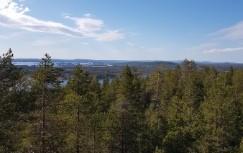
The terms of environmental permit regarding emissions to waterways and air are very strict. However, on preliminary examination, it can be stated that the conditions imposed do not prevent the construction of the biorefinery.
Meanwhile, the company applied for an exceptional permit to start the construction work. PsAVI made an affirmative decision in accordance with the application.
Boreal Bioref Ltd. builds a biorefinery in Kemijärvi with a production capacity of 500,000 tons of versatile bio-products. The mill produces long-fibre bleached and unbleached pulp, dissolved pulp, microcrystalline cellulose (MCC), C5 and C6 sugars, electricity twice as much as its own need, biogas, pine oil, turpentine and granulated soil improvement substances. The procured raw material will be fully utilized, and the mill fulfils maximumly the modern requirements of the circular economy.
The refinery uses 2.8 million cubic meters of wood raw material per year of which about 0.5 million cubic metres is saw chips from local sawmills. The company has eight contracts for raw material procurement and the raw material is procured efficiently and in an environmentally friendly manner from the mill's near-by areas, avoiding long transport routes.
The production plant is amid fast growing and young forests in need of thinning, further improving the biorefinery's supply of raw materials. The proportion of young and mature forests in the company's procurement area is over 70% of the forest area.
The timely thinning ensures the reinforcement of the woods consequently increasing the log proportion in the future. Increasing the proportion of logs ensures the supply of raw materials and development opportunities for, inter alia, glued laminated timber, semi-finished products, and other further processed products.
Because the products arising from the sawmill will be used, for instance, for house building, furniture, and other targets of long usage, the increasing usage of log will raise the carbon stock in comparison to its current state when it comes to the felling of timber.